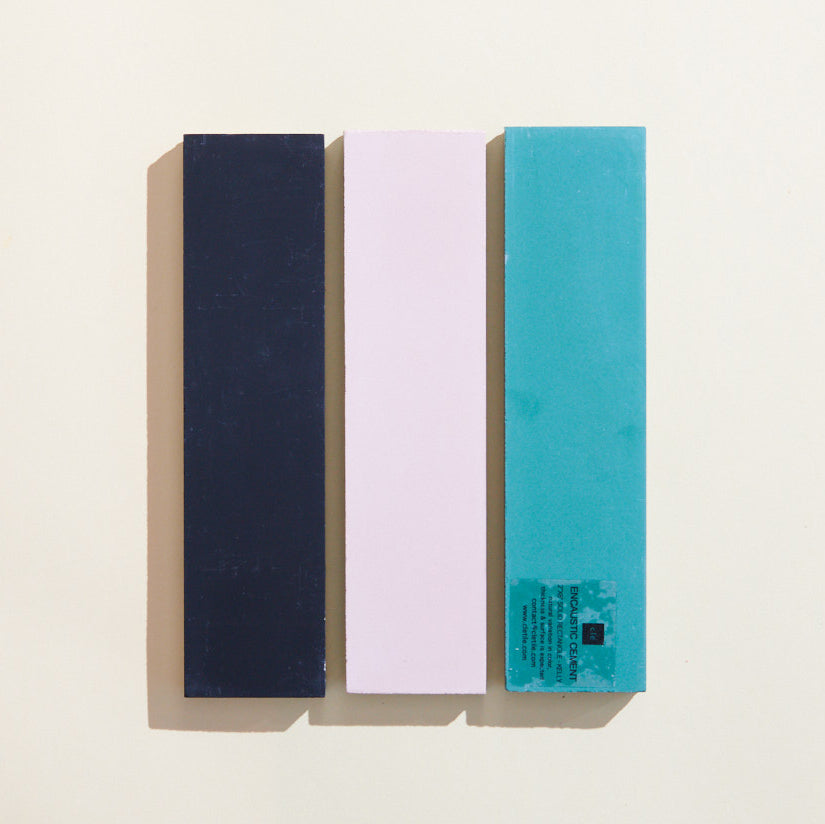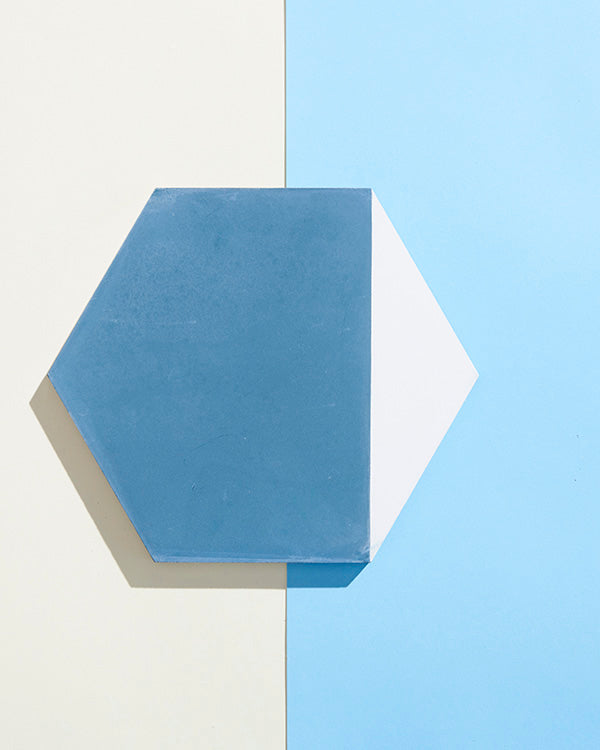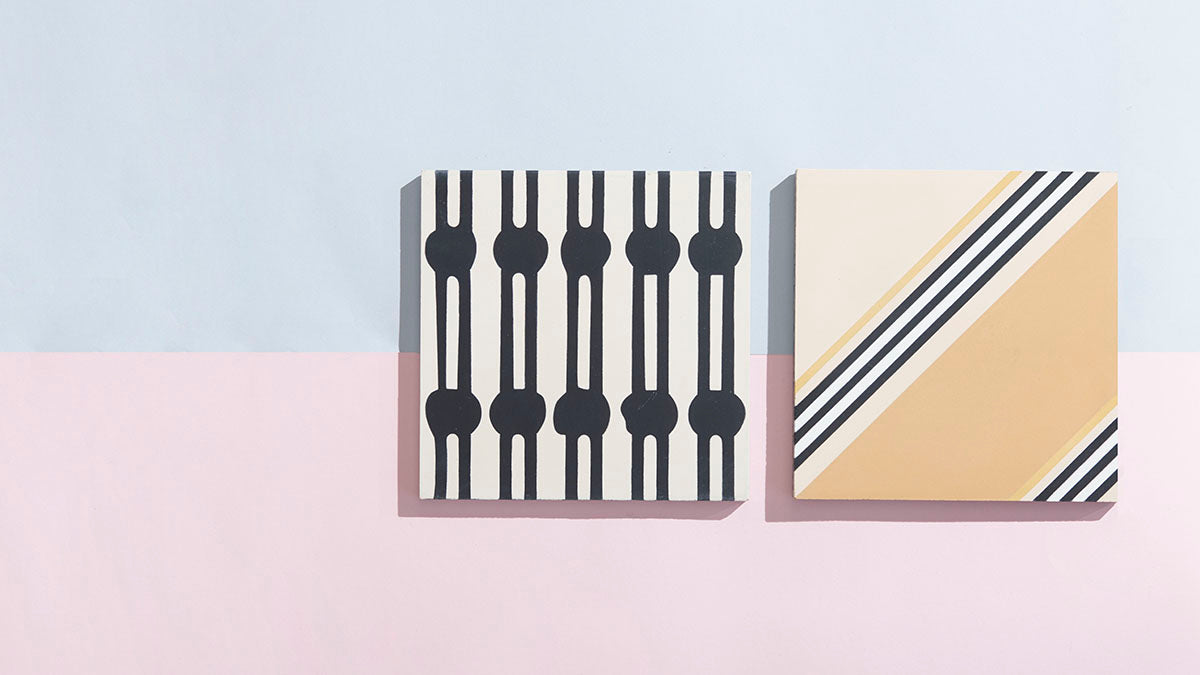what is encaustic tile? a close look at this handcrafted treasure
by clé tile | published: Feb 04, 2025

clé encaustic cement
encaustic cement tile is the type of tile you’ll learn about once, then start to see everywhere. first developed in the mid-1800s by artisans in catalonia, spain, who drew on centuries of moorish influence, the tile went on to grace apartments in barcelona, museums in paris, palaces in vietnam, and beyond.
the term “encaustic” hasn’t always been associated with cement tile. it was originally used to describe a type of ceramic tile whose pattern is created using different colors of clay rather than a glaze. now, it is also used to describe cement tile, as it’s created using a similar process of inlaying different colors of cement.
because we offer so many varieties of artisan-crafted cement tile (and ushered in a new era of cement, thank you very much) cement tile will be our focus here.
what is encaustic tile?
again, while the term encaustic tile traditionally describes a type of fired ceramic tile, you’ll often see the term encaustic cement tile as well. encaustic tile is also known as inlaid tile, as the pattern is inlaid into the body of the tile. even if the tile were to wear down over time, its design would remain.
below, learn about the origins of encaustic tile and what makes it entirely unique from any other type of tile.
origins and evolution
technically speaking, the term “encaustic,” which is greek for “burning in,” originally referred to a centuries-old process of painting with a beeswax-based paint, then setting it with heat. when victorians in the nineteenth century saw inlaid tile created using different colors of clay or cement, they mistakenly called it encaustic tile for its resemblance to this enamel work.
however it’s made, encaustic tile has a colorful history. it first gained popularity in the 13th century as a form of medieval church decoration. this lasted until the 16th century, when the protestant reformation brought on the removal of these types of adornment.
fast forward to the gothic revival era, which began in the late 18th century, and encaustic tile began to catch the eye of artisans once more. soon, craftsmen were able to mass produce this type of tile, making it more accessible to the general public. western europe and especially england led the charge in encaustic tile production, and manufacturers cropped up in the united states as well.
in the 1930s, encaustic tile began to wane in popularity as people looked to more affordable types of tiles.
composition and craftsmanship
again, our focus here will be on encaustic cement tile. this type of tile is made up of portland cement (usually a combination of limestone, shale, and clay minerals) along with pigment. each tile is handcrafted using a process that inlays the pattern into the tile, rather than painting it on the surface. this process was first perfected by artisans in catalonia, spain, and we’ll dig more into the specifics in a bit.
it’s worth noting that the process of crafting cement tile is similar to the encaustic process developed by herbert minton in england in the 1830s for crafting clay tile. so again, while encaustic tiles began as fired ceramic tile, the term soon expanded to include cement tile as well.
unique characteristics
encaustic cement tile is known for being remarkably durable and long lasting, as it’s compressed under high pressure during the manufacturing process. it also has some texture to it since it does not have a glazed finish. this all makes cement an incredible option for floors and high-traffic areas. sealing cement tile makes it resistant to stains and water as well.
another thing we love about cement? it develops a beautiful patina as it ages. this gives it a beautifully lived-in look over time, one that imparts soul to your tile.
how is encaustic cement tile made?
artisans in catalonia, spain established the process for crafting cement tile. first, pigments are added to metal molds, followed by cement. then, each tile is pressed using a hydraulic press and sent through a water bath. after that, the tiles are stacked and left to dry and cure, which allows the pigments to develop even further. note that no kilns are involved in making cement tile.
the process of inlaying the pattern, rather than painting it on the surface, was similar to the encaustic process pioneered by herbert minton in england in the 1830s for clay tile, and it is often referred to by the same name, though encaustic tiles began as a fired ceramic tile, cement tile also became known throughout the world as encaustic cement tile — and is still known in most countries by this term.
getting to know encaustic tile
there are many reasons to love encaustic tile—its timeless beauty, longevity, and versatility, for starters.
timeless beauty
we’re big fans of encaustic cement tile for the timeless beauty it lends to any space. this is especially true given how many pattern options are inspired by centuries-old moroccan and mediterranean designs. as cement tile wears over time, it also develops a patina that gives it a seasoned, lived-in look. the longer the ages, the greater the charm.
longevity
encaustic cement tile is remarkably long lasting — so much so that there are even established guidelines around matching centuries-old, historic tile. cement tile is a popular option for flooring and high-traffic areas due to its durability. it will last for generations given the proper care and maintenance.
one more perk: cement tile’s intricate patterns are designed to last through years of wear, since they are laid into the tile rather than painted or glazed on. and unlike glazed types of tile, you can have cement tile refinished if needed (though we prefer to embrace the tile’s love-worn look).
versatility
we’ve mentioned that encaustic cement tile is a great option for flooring and high-traffic areas, but that’s just the start. we’ve seen it installed on kitchen and bathroom floors, stove and sink backsplashes, outdoor water features, and beyond. cement’s ability to withstand heavy wear and resist water makes it incredibly versatile.

clé cement faceted square in mocha + black
where to use encaustic tile
wondering where you can install encaustic cement tile? you’d be hard-pressed to find a space you can’t install it in.
floors
starting indoors, encaustic tile can easily grace kitchen, bathroom, shower, and steam room floors. its subtle texture offers increased resistance, which is a major advantage in high-traffic and wet areas. again, keep in mind that this type of tile generally needs to be sealed regularly with a penetrating sealant, especially where there will be moisture.
kitchens
as we just mentioned, cement tile is a dream for kitchen floors, where its unglazed surface offers much-welcome traction. and if you’re looking to add encaustic tile to your walls, you'll be delighted to know it’s a solid choice for kitchen and sink backsplashes, as well.
bathrooms
encaustic cement tiles are a beautiful and durable option for bathroom floors and walls, as well, adding a functional (and fun) touch to the space. as in the kitchen and other areas, their subtle texture offers increased slip resistance — especially valuable on wet floors. want to add encaustic tile to the vanity backsplash or shower wall? you can do that too.
porches and patios
looking outdoors, encaustic cement tile is a popular option for porches and patios, as long as they will not see freeze/thaw cycles. (cement tile isn’t freeze/thaw rated.) if you live in a non freeze/thaw location and choose to install cement outdoors, be sure your contractor installs the tile above grade and finishes it with a penetrating, weatherproof sealant.
creative installations
there are countless creative ways to use encaustic cement tile in your space. for starters, it comes in an endless range of designs, from bold colors to intricate patterns. whether classic octagon and bouchon tiles or playful granny squares are your style, it’s possible with encaustic cement.
you never have to opt for just one type of cement tile, either. many choose two contrasting colors of tile and have it installed in a checkerboard pattern, which can create a classic or statement-making look, depending on which colors you choose.
as with all types of artisan-crafted tile, make sure to partner with an experienced contractor who has the experience necessary to install your tile properly. it will also be your installer’s responsibility to calculate how much tile to order, accounting for overage to cover any breakage or future repairs.
understanding the limits of encaustic tile
while encaustic cement tile is incredibly versatile, it does come with some limitations. for example, it generally is not freeze/thaw rated, so you should not install it outdoors in climates that see regular cycles of freezing and thawing. if you do choose to install it in your outdoor space, keep in mind that heavy sunlight exposure can cause certain colors to fade over time. (though that’s something to embrace, in our book.)
in addition, remember that cement tile needs a little maintenance now and then to preserve its beauty. due to its porous nature, all cement tile should be sealed after grouting and then resealed regularly. how often you reseal depends on where the tile is installed and how much water exposure it sees.
our handcrafted encaustic tile
we gladly take credit for bringing awareness of artisan-crafted encaustic cement tile, in its many sophisticated yet approachable options, to the united states. in 2022, we ushered in a new era of cement with our cinema collection, and the options continue to expand. now, you’ll find it in an endless array of shapes and sizes, in patterns from traditional to modern. start exploring our handcrafted encaustic tile options, and you likely won’t look back.
encaustic cement tiles are a beautiful and durable flooring option that can add a unique touch to any space. available in a wide variety of colors, patterns, and designs, they’re also easy to care for and can last for many years with proper maintenance. so, if you’re looking for a flooring or wall option that is both design-conscious and practical, encaustic cement tile may just be your perfect match.


